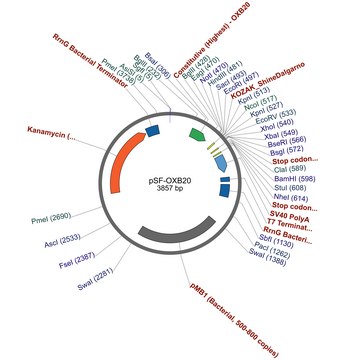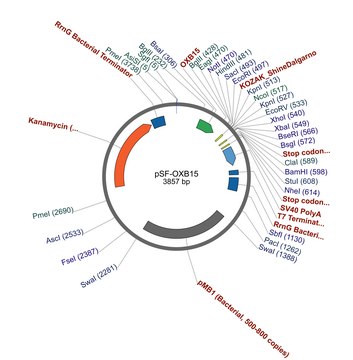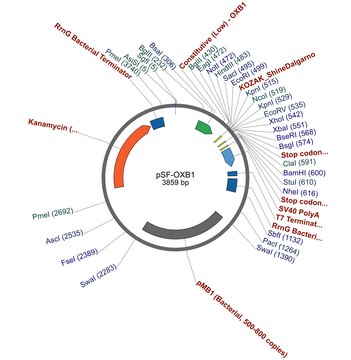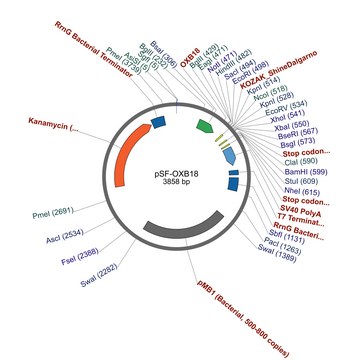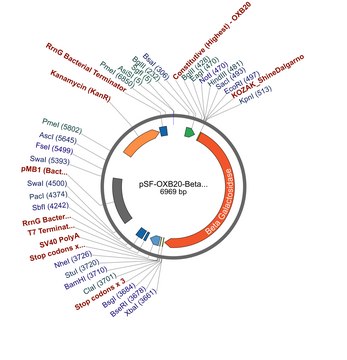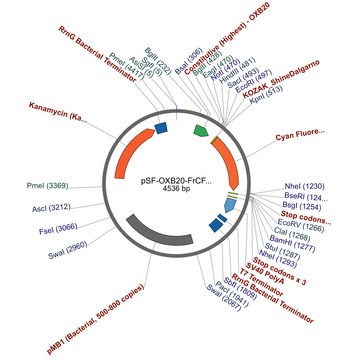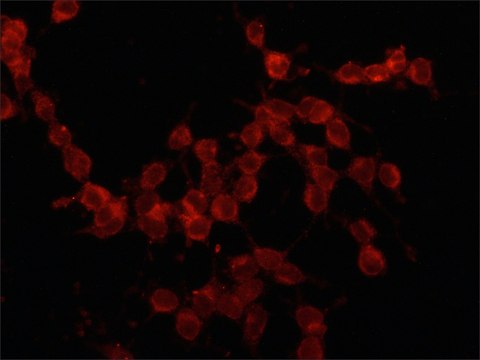OGS554
PSF-OXB11 - INTERMEDIATE STRENGTH BACTERIAL VECTOR
plasmid vector for molecular cloning
Synonym(s):
cloning vector, expression vector, molecular cloning vector, plasmid, plasmid vector, snapfast vector, vector
About This Item
Recommended Products
recombinant
expressed in E. coli
form
buffered aqueous solution
mol wt
size 3858 bp
bacteria selection
kanamycin
Origin of replication
pUC (500 copies)
Peptide cleavage
no cleavage
Promoter
Promoter name: OXB11
Promoter activity: constitutive
Promoter type: bacterial
reporter gene
none
shipped in
ambient
storage temp.
−20°C
General description
Promoter Expression Level: This plasmid contains a medium strength constitutive E. coli promoter that was derived from the RecA promoter by random mutagenesis. It is part of our constitutive bacterial promoter range. This promoter (OXB11) shows the intermediate levels of expression in the range with OXB1 showing the lowest level and OXB20 showing the highest level of expression. They require no inducing agent for expression.
Application
Multiple cloning site notes: There are a few important sites within the MCS. These include the NcoI site the XbaI site and the BsgI and BseRI sites. The NcoI site contains a start codon that is immediately downstream of both a Kozak and Shine-Dalgarno ribosomal binding site. These allow for optimal positioning of genes when the start codon is placed in this location. If this is not required and you wish to use a downstream site for gene cloning you can remove the NcoI site by cleaving the plasmid with KpnI.
The XbaI site contains a stop codon. This stop codon is positioned in a specific position in relation to the BsgI and BseRI sites that are immediately downstream. When either BseRI or BsgI cleave the plasmid they produce a TA overhang from the stop codon in the XbaI site that is compatible with all of our peptide tag plasmids cut with the same sites. BseRI and BsgI sites are non-palindromic and cleave a defined number of bases away from their binding site.
Whenever we clone a gene into our multiple cloning site we always position the start and stop codon in the same positions in the MCS. If the start and ends of the genes are not compatible with NcoI and XbaI we extend the sequence to the nearest external sites but keep the start and stop codons locations consistent.
Sequence
Analysis Note
related product
Storage Class Code
12 - Non Combustible Liquids
Flash Point(F)
Not applicable
Flash Point(C)
Not applicable
Regulatory Information
Choose from one of the most recent versions:
Certificates of Analysis (COA)
It looks like we've run into a problem, but you can still download Certificates of Analysis from our Documents section.
If you need assistance, please contact Customer Support.
Already Own This Product?
Find documentation for the products that you have recently purchased in the Document Library.
Our team of scientists has experience in all areas of research including Life Science, Material Science, Chemical Synthesis, Chromatography, Analytical and many others.
Contact Technical Service